Mopar folks are a proud bunch who understand that Chrysler, Dodge, and Plymouth have always made some awesome cars; everything from the original Hemi-powered B-Bodies, to the current 707hp Hellcat. With such a presence in the performance industry, it’s hard not to let some of that spill over into the diesel truck market. After all, Dodge has been cranking out industry-leading diesels since 1989, when the 250- and 350-Series pickups were partnered up with the Cummins Turbodiesel engine. What started back then as a 160hp/400lb-ft combination has blossomed over the years into 385 hp and 850 lb-ft of torque, with the new Rams being so capable that one needs a Class-A license to max out the truck’s tow rating.
But the factory specifications are hardly where it stops. Cummins-powered Dodges have come to dominate the diesel performance aftermarket, with parts and pieces available to build a rig that’s anywhere from 500 to 2,500 hp. While the 2,500hp parts are pretty hairy, having a street-driven diesel that still drives and tows like a normal truck, while making 700 rear-wheel horsepower or more, is quite common. In fact, it usually only takes a couple of upgrades to get into the 400- to 500-rwhp range if you choose your parts and pieces correctly.
With that in mind, we’ve compiled a beginner’s guide of useful parts and companies for ’89-14 model Rams. Since the major difference throughout the years has been the injection system, we’ve broken the categories down into the ’89-93 models (VE injection pump), ’94-98 (P7100, or P-pump), ’98.5-02 (VP44), ’03-07 (CP3), and ’07-14 (CP3, 6.7L engine).
For this guide, we’ll give you the pros and cons of each generation of truck, as well as some go-fast goodies to get you started. So sit back, relax, and enjoy a crash course on ’89-14 Cummins-powered Ram trucks!
1989 to ’93: First-Gen
These older square-body trucks are the ones that started it all for Cummins, Dodge, and most of the performance diesel crowd. While they were rated at 160 hp from the factory, free modifications to the fueling system can bump the trucks up another 50-70 hp or so, without many adverse effects. Nevertheless, these trucks are fuel limited by the Bosch VE injection pump, and will peak at about 500 rear-wheel horsepower if you really try, but most people settle at about 300 hp, which makes for a good little starter diesel.
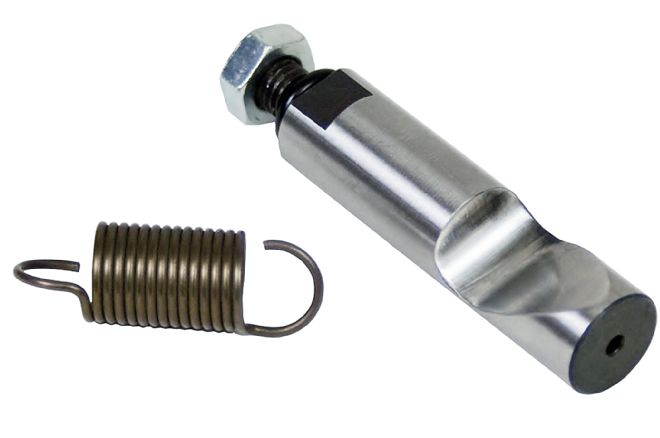
| Diesel Fuel Pin And Spring
Diesel Fuel Pin & 3,200-rpm Spring
BD’s VE pump fuel pin and governor spring can give any ’89-93 Cummins 5.9L powered Dodge truck a new lease on life. This little combo provides an increase of 30-40 hp and 90-100 ft-lb of torque while widening the powerband by around 30 percent. To top it off, these increases are achieved with a fairly simple installation requiring minimal tools and approximately 2-3 hours of your time. You will not believe you are driving the same truck!
Made from Chromalloy steel, the pin is milled with a precision radius angle cut, heat treated to a 52 Rockwell hardness, then precision ground with radius cut—all this designed to overcome wear and failure. A 3,200-rpm governor spring (with a low-profile spacer washer and shaft O-ring) is also included to extend the engine rev range by 700 rpm.
Source: BD Diesel Performance
800-887-5030 • www.dieselperformance.com
Universal Air Filter
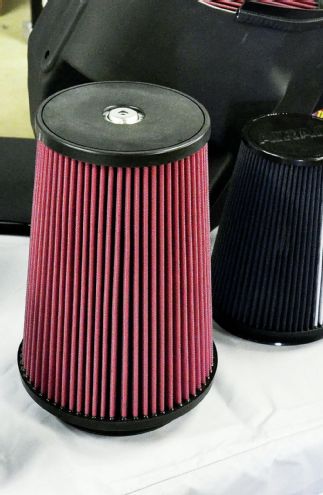
| Universal Air Filter
As compression ignition engines, diesels do not have a throttle plate to incur wasteful pumping losses—that’s one of the reasons diesels are so efficient relative to gasoline engines. That’s not to say diesels don’t have pumping losses, and anything you can do to reduce the impediment to flow in the inlet path will equate to free power and torque at the wheels. That’s the idea behind Airaid’s Premium Filter. This hand-built filter uses multiple layers of cotton gauze combined with a proprietary filtration technology that traps the smallest dirt particles while introducing a minimal flow restriction to the inlet tract. They’re washable, reusable, and have a lifetime warranty too.
Source: Airaid Universal Filter
800-498-6951 • www.airaid.com
1994 to ’98: Second-Gen (P7100)
Think of the second-gen Dodges as the ’68-70 Chargers of the diesel industry. For years, these P-pumped Dodges have dominated racing circles, and while the newer common-rail (CP3 pump) crowd is starting to catch up, these older Rams are still leading the way. Since horsepower is easy to come by (simple pump and injector modifications will add nearly 300 hp), the transmission is one of the first things that needs to be addressed. The Dodge 47RH and 47RE four-speeds that come in these models are based loosely on 727 architecture, with changes, updates, and an Overdrive gear. While they do well at stock power levels, once the engine is modified, both the converter and transmission will start to slip and require numerous upgrades. Aside from the transmission, the engine is a workhorse, and the factory crank, rods, pistons, cam, and head will all be fine up to about 700 rear-wheel horsepower, as long as exhaust gas temperatures are kept in check. Past that, these mechanical monsters can go as far as your wallet will, with fast P-pumped street trucks checking in at well over 1,000 hp to the wheels.
Modified Injection Pump
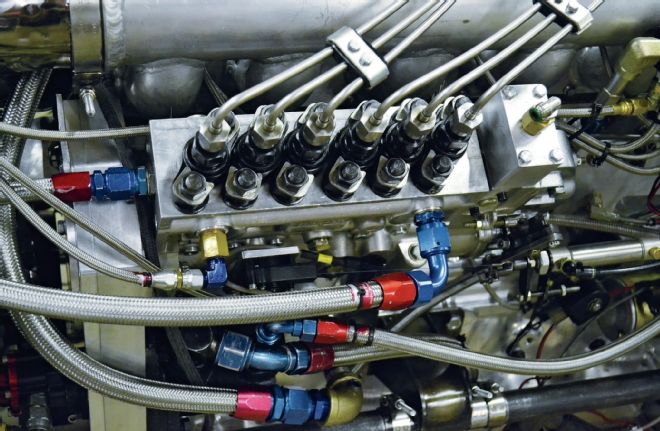
| Modified Injection Pump
A rebuilt diesel pump, such as one from Scheid Diesel, can easily boost the fuel delivery to your second-gen, and provided your turbo can keep up with the extra air demand, it will only equal more twist to the tires. Scheid can rebuild your existing injection pump with new delivery valves, 3,000- or 4,000-rpm governor springs, and other performance tweaks. They can also take a normal 12mm P7100 injection pump and turn it into a full-tilt monster. By enlarging the plungers and barrels to 13mm, using a quick-rate cam, and installing governor springs for 5,000-plus rpm operation, this injection pump is perfect for extreme street trucks and competition trucks alike. The pump’s output is also adjustable between 400cc and 800cc (for 800hp and 1,600hp levels) with an adjustable fuel plate. Every pump is benched and balanced before shipping.
Source: Scheid Diesel
800-669-1593 • www.scheiddiesel.com
Radiator Upgrade
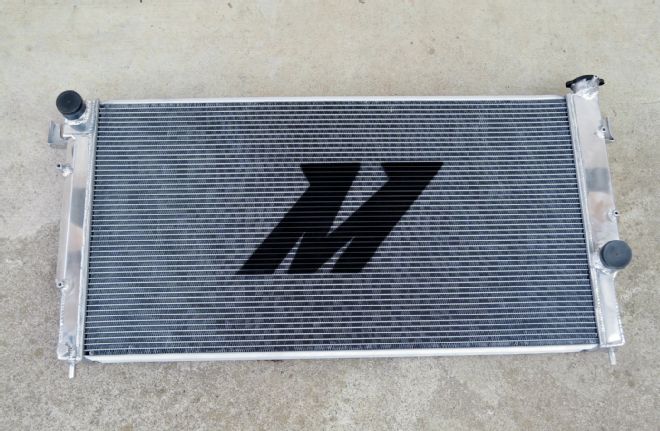
| Radiator Upgrade
Take a three-ton vehicle, add fuel, add air, add a driver with motor oil in his veins, and you’ve got a recipe for lots of extra engine-damaging heat. More preventative in nature, a radiator upgrade can keep temps in check, but it can also improve efficiency, and that greater cooling capacity will allow you to realize the true benefit of a fully unfettered diesel. Mishimoto offers radiator upgrades for all generations of Dodge diesels, but here they shine as a supporter of second gens since the power pickins come so easily. Mishimoto’s direct-fit performance aluminum radiator for the ’94-02 Dodge 5.9L Cummins can keep up with the constant abuse of towing, hauling, and runs on the dragstrip. It features a brazed aluminum core with TIG-welded end tanks for great durability, reliability, and performance. It’s also a direct factory fit, making installation easy with no cutting or modification required.
Source: Mishimoto radiator
877-GOMISHI • www.mishimoto.com
1998.5 to 2002: Second-Gen (VP44)
While the body style stayed the same in 1998.5 to 2002 as it did from ’94-98, the injection system was switched over to the electronically controlled VP44 pump, and the engine received a four-valve-per-cylinder head instead of the previous two-valve design. While the VP44s are good for about 650 rear-wheel horsepower all-out, and seem to fail about every 200,000 miles, these Rams are very good all-around trucks. Their electronic configuration makes it easy to adjust horsepower up or down, and four-door trucks are a lot easier to find (four-door 12-valves were only made for a half a year in ’98). While many people dismiss this model Dodge because it falls in between the high-horsepower 12-valves and newer common rails, there are thousands of folks out there who are perfectly happy with their ’98-02 Dodges, and we don’t blame them for wanting to turn up the wick and join the power party!
Tuner Programmers
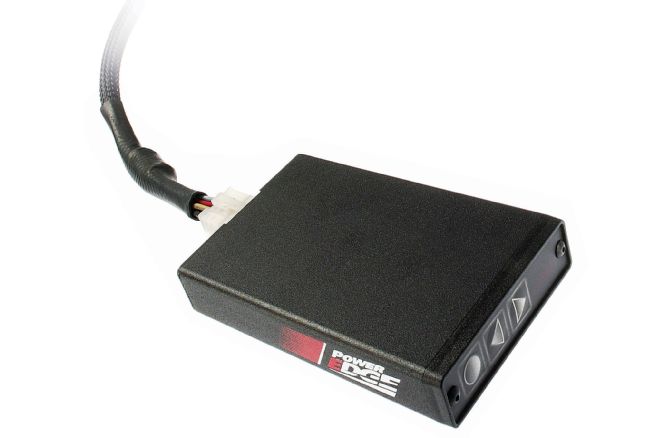
| Power Edge Tunner Programmer
As in the world of turbocharged gasoline engines, diesels too can benefit greatly from an optimized computer tune. Increasing the turbo’s boost pressure in conjunction with more aggressive fuel delivery and injection timing can turn up a diesel’s power level with almost no fuss, making it one of the biggest bolt-on bangs for your buck. One tuner in particular, the Edge Comp from Thoroughbred Diesel, features five power levels with power gains from 40 to 120 hp. Each of the five power levels has an independent five-level adjustable responsiveness setting, providing for a total of 25 levels of adjustability. The responsiveness settings enable you to dial-in the optimum balance between responsiveness and low-boost smoke control, no matter what additional power modifications have been made to the engine. The Comp module is fully adjustable on the fly and mounts inside the cab.
Source: Thoroughbred Diesel
866-737-4966 • www.thoroughbreddiesel.com
Upgraded Fuel Pump
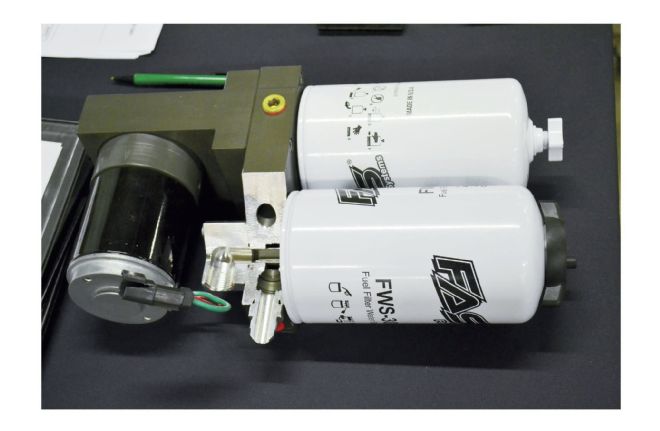
| Fuel Pump
With a high-performance gasoline engine, a fuel pump upgrade is something that comes well after a bunch of other stuff has occurred, such as head porting, bigger cam, and a manifold upgrade. But with a Cummins diesel, the capacity to easily get more air into the engine without touching much anything else means a bigger fuel pump gets put near the front of the list. Thankfully, it’s an easy mod, and this Titanium Series diesel fuel pump from FASS is a compact design with a very powerful motor. This assembly can flow up to 260 gph and offers an advanced filtration method that removes water, air, vapor, and debris with a filtration rating of 3 microns. The added filtration will help improve engine idle and extend the life of the injectors and injection pump.
Source: FASS Diesel Fuel Systems
636-433-5410 • www.fassride.com
2003 to ’07: Third-Gen
Starting in 2003, Dodge joined the common-rail diesel injection crowd with their Cummins engines. While the previous generations had used an injection pump to fire off each injector, these new trucks had a common fuel injector rail, and solenoid-activated injectors to control injection events. The result was more power, a cleaner burn, and a whole lot of aftermarket potential. Out of all the generations, these Dodges are perhaps the most often modified, and the most driver friendly. With timing, injection rates, and other parameters all easily changeable, ’03-07 Dodges are the truck to have for computer friendly hot rodders. It’s not uncommon for these trucks to be in the 700 to 900hp range and remain streetable, and 500 to 600 hp is just a tuner, injectors, and turbo away. Like the earlier models however, they require more costly transmission upgrades to handle this type of power if the truck is an automatic.
Tuner Programmers
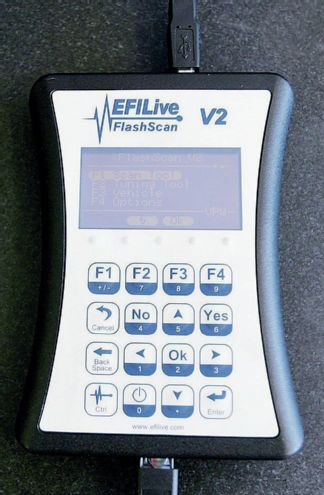
| Tuner Programmers
As with first- and second-gen Cummins diesels, these Rams respond dramatically to changes in boost and fuel delivery. As we’ve found, big bumps in performance can be found with just a flash to the powertrain control module which controls all the affected parameters. One cutting-edge company from New Zealand called EFILive works their tuning magic the 21st century way through the Internet, supplying tunes for unique customer demands over great distances. EFILive tunes are available for gen-three ’06 and ’07 Cummins-powered Rams (and ’08 and ’09 gen-fours as well), and are some of the most powerful on the market, giving the end user complete control over every aspect of tuning, including injection timing and duration, rpm limits, and more. Don’t worry about the overseas connection; EFILive software is supported by tuners across the country who can write a custom tune specifically for your application.
Source: EFILive
www.EFILive.com
Water-Methanol Injection
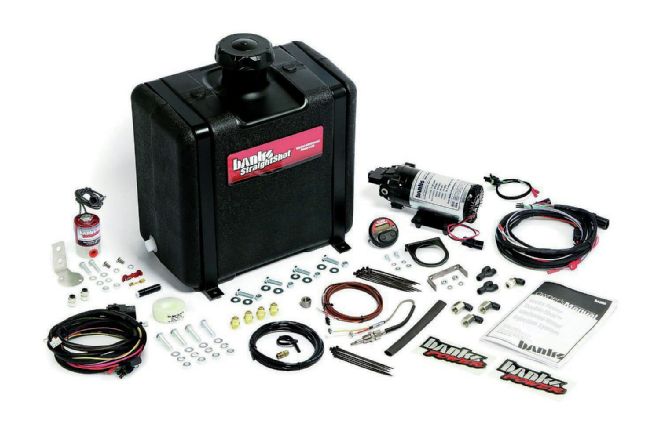
| Water Methanol Injection
The injection of a water-methanol mix into the combustion process has been around for decades, and has been used successfully in both boosted gasoline and diesel engines to great effect. The inherent cooling nature of the process works primarily through the instantaneous change in state from fluid to gas, and the resulting expansion (along with the burning air and fuel) boosts cylinder pressure without the extra heat that normally accompanies added fuel and air. One such pair of systems designed for the third-gen Ram is from Banks Power. The Banks Straight-Shot and Double-Shot water-methanol injection systems bring a new level of optimization and control to this technology, with gains of up to 175 hp without tuning. The Double-Shot system offers the same benefits of the Straight-Shot and adds a second stage for increased output and control.
Source: Gale Banks Engineering
800-601-8072 • www.bankspower.com
2007.5 to ’14: Fourth-Gen
The longest run of the same body style in a while, the newest of the Rams are some of the most capable factory diesels ever produced. These models also saw a displacement increase from 5.9L to 6.7L, resulting in more torque, quicker spooling, and yet more power. If the transmissions were a weak link on the earlier models, the newest models unfortunately have the weakest transmissions of all. The 68RFE automatics are prone to wearing out at 150,000-200,000 miles even in stock form, and to hot rod them costs some serious coin. Nevertheless, once the transmission situation is straightened out, the extra cubes of the 6.7L really shine in all-around performance and towing applications.
Transmission Controller
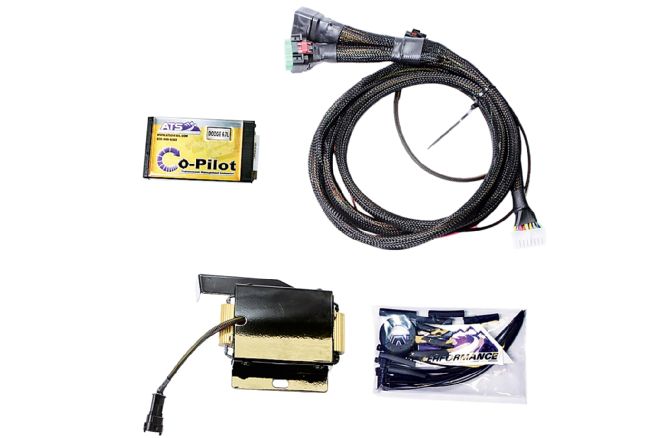
| Transmission Controller
Getting a transmission to live under lots of punishment from a torque-monster powerplant is a battle of holding power. Half the battle is won if clutches and bands can be prevented from slipping, because once the slipping starts, it’s a rapid downhill ride for the transmission. With today’s computer-controlled transmissions, the line pressure that is fed through the valvebody is electronically controlled through solenoids and actuators. Fortunately, line pressure and timing can be electronically altered to improve the holding power and life expectancy of the 68RFE trans. One company, called ATS Diesel Performance, offers a transmission controller called the ATS Co-Pilot, which boosts the holding power of a stock 68RFE to around the 400hp mark. In situations where the vehicle owner requires transmission holding ability above that, the addition of an ATS transmission and Five Star torque converter is recommended due to mechanical limitations.
Source: ATS Diesel Performance
866-209-3695 • www.atsdiesel.com
Tuner Programmers
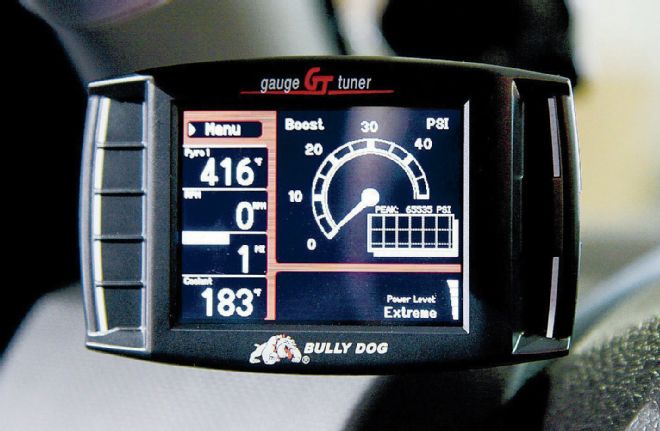
| Bully Dog Tuner
Just as with prior generations of Cummins-powered Ram diesels, the fourth generation benefits mightily from supersized doses of turbo boost, fuel, and fuel timing. And like earlier iterations, today’s Cummins diesel responds to state-of-the-art programming from plug-n-play programmers such as the Triple Dog Gauge Tuner from Bully Dog. Bully Dog says their GT unit for fourth-gen Rams is their top-selling product for several really good reasons: it combines a vehicle engine tuner, monitor, gauge, and diagnostics all in a single unit, so it’s really much more than just a tuner/programmer. According to the manufacturer, the GT transforms the utility of the 6.7L Cummins by increasing horsepower, improving fuel economy, and providing a comprehensive set of monitoring features and diagnostic functions.
Source: Bully Dog GT
877-285-5936 • www.bullydog.com
 | Diesel Fuel Pin And Spring
Diesel Fuel Pin & 3,200-rpm Spring
BD’s VE pump fuel pin and governor spring can give any ’89-93 Cummins 5.9L powered Dodge truck a new lease on life. This little combo provides an increase of 30-40 hp and 90-100 ft-lb of torque while widening the powerband by around 30 percent. To top it off, these increases are achieved with a fairly simple installation requiring minimal tools and approximately 2-3 hours of your time. You will not believe you are driving the same truck!
Made from Chromalloy steel, the pin is milled with a precision radius angle cut, heat treated to a 52 Rockwell hardness, then precision ground with radius cut—all this designed to overcome wear and failure. A 3,200-rpm governor spring (with a low-profile spacer washer and shaft O-ring) is also included to extend the engine rev range by 700 rpm.
Source: BD Diesel Performance
| Diesel Fuel Pin And Spring
Diesel Fuel Pin & 3,200-rpm Spring
BD’s VE pump fuel pin and governor spring can give any ’89-93 Cummins 5.9L powered Dodge truck a new lease on life. This little combo provides an increase of 30-40 hp and 90-100 ft-lb of torque while widening the powerband by around 30 percent. To top it off, these increases are achieved with a fairly simple installation requiring minimal tools and approximately 2-3 hours of your time. You will not believe you are driving the same truck!
Made from Chromalloy steel, the pin is milled with a precision radius angle cut, heat treated to a 52 Rockwell hardness, then precision ground with radius cut—all this designed to overcome wear and failure. A 3,200-rpm governor spring (with a low-profile spacer washer and shaft O-ring) is also included to extend the engine rev range by 700 rpm.
Source: BD Diesel Performance | Universal Air Filter
As compression ignition engines, diesels do not have a throttle plate to incur wasteful pumping losses—that’s one of the reasons diesels are so efficient relative to gasoline engines. That’s not to say diesels don’t have pumping losses, and anything you can do to reduce the impediment to flow in the inlet path will equate to free power and torque at the wheels. That’s the idea behind Airaid’s Premium Filter. This hand-built filter uses multiple layers of cotton gauze combined with a proprietary filtration technology that traps the smallest dirt particles while introducing a minimal flow restriction to the inlet tract. They’re washable, reusable, and have a lifetime warranty too.
Source: Airaid Universal Filter
| Universal Air Filter
As compression ignition engines, diesels do not have a throttle plate to incur wasteful pumping losses—that’s one of the reasons diesels are so efficient relative to gasoline engines. That’s not to say diesels don’t have pumping losses, and anything you can do to reduce the impediment to flow in the inlet path will equate to free power and torque at the wheels. That’s the idea behind Airaid’s Premium Filter. This hand-built filter uses multiple layers of cotton gauze combined with a proprietary filtration technology that traps the smallest dirt particles while introducing a minimal flow restriction to the inlet tract. They’re washable, reusable, and have a lifetime warranty too.
Source: Airaid Universal Filter | Modified Injection Pump
A rebuilt diesel pump, such as one from Scheid Diesel, can easily boost the fuel delivery to your second-gen, and provided your turbo can keep up with the extra air demand, it will only equal more twist to the tires. Scheid can rebuild your existing injection pump with new delivery valves, 3,000- or 4,000-rpm governor springs, and other performance tweaks. They can also take a normal 12mm P7100 injection pump and turn it into a full-tilt monster. By enlarging the plungers and barrels to 13mm, using a quick-rate cam, and installing governor springs for 5,000-plus rpm operation, this injection pump is perfect for extreme street trucks and competition trucks alike. The pump’s output is also adjustable between 400cc and 800cc (for 800hp and 1,600hp levels) with an adjustable fuel plate. Every pump is benched and balanced before shipping.
Source: Scheid Diesel
| Modified Injection Pump
A rebuilt diesel pump, such as one from Scheid Diesel, can easily boost the fuel delivery to your second-gen, and provided your turbo can keep up with the extra air demand, it will only equal more twist to the tires. Scheid can rebuild your existing injection pump with new delivery valves, 3,000- or 4,000-rpm governor springs, and other performance tweaks. They can also take a normal 12mm P7100 injection pump and turn it into a full-tilt monster. By enlarging the plungers and barrels to 13mm, using a quick-rate cam, and installing governor springs for 5,000-plus rpm operation, this injection pump is perfect for extreme street trucks and competition trucks alike. The pump’s output is also adjustable between 400cc and 800cc (for 800hp and 1,600hp levels) with an adjustable fuel plate. Every pump is benched and balanced before shipping.
Source: Scheid Diesel | Radiator Upgrade
Take a three-ton vehicle, add fuel, add air, add a driver with motor oil in his veins, and you’ve got a recipe for lots of extra engine-damaging heat. More preventative in nature, a radiator upgrade can keep temps in check, but it can also improve efficiency, and that greater cooling capacity will allow you to realize the true benefit of a fully unfettered diesel. Mishimoto offers radiator upgrades for all generations of Dodge diesels, but here they shine as a supporter of second gens since the power pickins come so easily. Mishimoto’s direct-fit performance aluminum radiator for the ’94-02 Dodge 5.9L Cummins can keep up with the constant abuse of towing, hauling, and runs on the dragstrip. It features a brazed aluminum core with TIG-welded end tanks for great durability, reliability, and performance. It’s also a direct factory fit, making installation easy with no cutting or modification required.
Source: Mishimoto radiator
| Radiator Upgrade
Take a three-ton vehicle, add fuel, add air, add a driver with motor oil in his veins, and you’ve got a recipe for lots of extra engine-damaging heat. More preventative in nature, a radiator upgrade can keep temps in check, but it can also improve efficiency, and that greater cooling capacity will allow you to realize the true benefit of a fully unfettered diesel. Mishimoto offers radiator upgrades for all generations of Dodge diesels, but here they shine as a supporter of second gens since the power pickins come so easily. Mishimoto’s direct-fit performance aluminum radiator for the ’94-02 Dodge 5.9L Cummins can keep up with the constant abuse of towing, hauling, and runs on the dragstrip. It features a brazed aluminum core with TIG-welded end tanks for great durability, reliability, and performance. It’s also a direct factory fit, making installation easy with no cutting or modification required.
Source: Mishimoto radiator | Power Edge Tunner Programmer
As in the world of turbocharged gasoline engines, diesels too can benefit greatly from an optimized computer tune. Increasing the turbo’s boost pressure in conjunction with more aggressive fuel delivery and injection timing can turn up a diesel’s power level with almost no fuss, making it one of the biggest bolt-on bangs for your buck. One tuner in particular, the Edge Comp from Thoroughbred Diesel, features five power levels with power gains from 40 to 120 hp. Each of the five power levels has an independent five-level adjustable responsiveness setting, providing for a total of 25 levels of adjustability. The responsiveness settings enable you to dial-in the optimum balance between responsiveness and low-boost smoke control, no matter what additional power modifications have been made to the engine. The Comp module is fully adjustable on the fly and mounts inside the cab.
Source: Thoroughbred Diesel
| Power Edge Tunner Programmer
As in the world of turbocharged gasoline engines, diesels too can benefit greatly from an optimized computer tune. Increasing the turbo’s boost pressure in conjunction with more aggressive fuel delivery and injection timing can turn up a diesel’s power level with almost no fuss, making it one of the biggest bolt-on bangs for your buck. One tuner in particular, the Edge Comp from Thoroughbred Diesel, features five power levels with power gains from 40 to 120 hp. Each of the five power levels has an independent five-level adjustable responsiveness setting, providing for a total of 25 levels of adjustability. The responsiveness settings enable you to dial-in the optimum balance between responsiveness and low-boost smoke control, no matter what additional power modifications have been made to the engine. The Comp module is fully adjustable on the fly and mounts inside the cab.
Source: Thoroughbred Diesel | Fuel Pump
With a high-performance gasoline engine, a fuel pump upgrade is something that comes well after a bunch of other stuff has occurred, such as head porting, bigger cam, and a manifold upgrade. But with a Cummins diesel, the capacity to easily get more air into the engine without touching much anything else means a bigger fuel pump gets put near the front of the list. Thankfully, it’s an easy mod, and this Titanium Series diesel fuel pump from FASS is a compact design with a very powerful motor. This assembly can flow up to 260 gph and offers an advanced filtration method that removes water, air, vapor, and debris with a filtration rating of 3 microns. The added filtration will help improve engine idle and extend the life of the injectors and injection pump.
Source: FASS Diesel Fuel Systems
| Fuel Pump
With a high-performance gasoline engine, a fuel pump upgrade is something that comes well after a bunch of other stuff has occurred, such as head porting, bigger cam, and a manifold upgrade. But with a Cummins diesel, the capacity to easily get more air into the engine without touching much anything else means a bigger fuel pump gets put near the front of the list. Thankfully, it’s an easy mod, and this Titanium Series diesel fuel pump from FASS is a compact design with a very powerful motor. This assembly can flow up to 260 gph and offers an advanced filtration method that removes water, air, vapor, and debris with a filtration rating of 3 microns. The added filtration will help improve engine idle and extend the life of the injectors and injection pump.
Source: FASS Diesel Fuel Systems | Tuner Programmers
As with first- and second-gen Cummins diesels, these Rams respond dramatically to changes in boost and fuel delivery. As we’ve found, big bumps in performance can be found with just a flash to the powertrain control module which controls all the affected parameters. One cutting-edge company from New Zealand called EFILive works their tuning magic the 21st century way through the Internet, supplying tunes for unique customer demands over great distances. EFILive tunes are available for gen-three ’06 and ’07 Cummins-powered Rams (and ’08 and ’09 gen-fours as well), and are some of the most powerful on the market, giving the end user complete control over every aspect of tuning, including injection timing and duration, rpm limits, and more. Don’t worry about the overseas connection; EFILive software is supported by tuners across the country who can write a custom tune specifically for your application.
Source: EFILive
| Tuner Programmers
As with first- and second-gen Cummins diesels, these Rams respond dramatically to changes in boost and fuel delivery. As we’ve found, big bumps in performance can be found with just a flash to the powertrain control module which controls all the affected parameters. One cutting-edge company from New Zealand called EFILive works their tuning magic the 21st century way through the Internet, supplying tunes for unique customer demands over great distances. EFILive tunes are available for gen-three ’06 and ’07 Cummins-powered Rams (and ’08 and ’09 gen-fours as well), and are some of the most powerful on the market, giving the end user complete control over every aspect of tuning, including injection timing and duration, rpm limits, and more. Don’t worry about the overseas connection; EFILive software is supported by tuners across the country who can write a custom tune specifically for your application.
Source: EFILive | Water Methanol Injection
The injection of a water-methanol mix into the combustion process has been around for decades, and has been used successfully in both boosted gasoline and diesel engines to great effect. The inherent cooling nature of the process works primarily through the instantaneous change in state from fluid to gas, and the resulting expansion (along with the burning air and fuel) boosts cylinder pressure without the extra heat that normally accompanies added fuel and air. One such pair of systems designed for the third-gen Ram is from Banks Power. The Banks Straight-Shot and Double-Shot water-methanol injection systems bring a new level of optimization and control to this technology, with gains of up to 175 hp without tuning. The Double-Shot system offers the same benefits of the Straight-Shot and adds a second stage for increased output and control.
Source: Gale Banks Engineering
| Water Methanol Injection
The injection of a water-methanol mix into the combustion process has been around for decades, and has been used successfully in both boosted gasoline and diesel engines to great effect. The inherent cooling nature of the process works primarily through the instantaneous change in state from fluid to gas, and the resulting expansion (along with the burning air and fuel) boosts cylinder pressure without the extra heat that normally accompanies added fuel and air. One such pair of systems designed for the third-gen Ram is from Banks Power. The Banks Straight-Shot and Double-Shot water-methanol injection systems bring a new level of optimization and control to this technology, with gains of up to 175 hp without tuning. The Double-Shot system offers the same benefits of the Straight-Shot and adds a second stage for increased output and control.
Source: Gale Banks Engineering | Transmission Controller
Getting a transmission to live under lots of punishment from a torque-monster powerplant is a battle of holding power. Half the battle is won if clutches and bands can be prevented from slipping, because once the slipping starts, it’s a rapid downhill ride for the transmission. With today’s computer-controlled transmissions, the line pressure that is fed through the valvebody is electronically controlled through solenoids and actuators. Fortunately, line pressure and timing can be electronically altered to improve the holding power and life expectancy of the 68RFE trans. One company, called ATS Diesel Performance, offers a transmission controller called the ATS Co-Pilot, which boosts the holding power of a stock 68RFE to around the 400hp mark. In situations where the vehicle owner requires transmission holding ability above that, the addition of an ATS transmission and Five Star torque converter is recommended due to mechanical limitations.
Source: ATS Diesel Performance
| Transmission Controller
Getting a transmission to live under lots of punishment from a torque-monster powerplant is a battle of holding power. Half the battle is won if clutches and bands can be prevented from slipping, because once the slipping starts, it’s a rapid downhill ride for the transmission. With today’s computer-controlled transmissions, the line pressure that is fed through the valvebody is electronically controlled through solenoids and actuators. Fortunately, line pressure and timing can be electronically altered to improve the holding power and life expectancy of the 68RFE trans. One company, called ATS Diesel Performance, offers a transmission controller called the ATS Co-Pilot, which boosts the holding power of a stock 68RFE to around the 400hp mark. In situations where the vehicle owner requires transmission holding ability above that, the addition of an ATS transmission and Five Star torque converter is recommended due to mechanical limitations.
Source: ATS Diesel Performance | Bully Dog Tuner
Just as with prior generations of Cummins-powered Ram diesels, the fourth generation benefits mightily from supersized doses of turbo boost, fuel, and fuel timing. And like earlier iterations, today’s Cummins diesel responds to state-of-the-art programming from plug-n-play programmers such as the Triple Dog Gauge Tuner from Bully Dog. Bully Dog says their GT unit for fourth-gen Rams is their top-selling product for several really good reasons: it combines a vehicle engine tuner, monitor, gauge, and diagnostics all in a single unit, so it’s really much more than just a tuner/programmer. According to the manufacturer, the GT transforms the utility of the 6.7L Cummins by increasing horsepower, improving fuel economy, and providing a comprehensive set of monitoring features and diagnostic functions.
Source: Bully Dog GT
| Bully Dog Tuner
Just as with prior generations of Cummins-powered Ram diesels, the fourth generation benefits mightily from supersized doses of turbo boost, fuel, and fuel timing. And like earlier iterations, today’s Cummins diesel responds to state-of-the-art programming from plug-n-play programmers such as the Triple Dog Gauge Tuner from Bully Dog. Bully Dog says their GT unit for fourth-gen Rams is their top-selling product for several really good reasons: it combines a vehicle engine tuner, monitor, gauge, and diagnostics all in a single unit, so it’s really much more than just a tuner/programmer. According to the manufacturer, the GT transforms the utility of the 6.7L Cummins by increasing horsepower, improving fuel economy, and providing a comprehensive set of monitoring features and diagnostic functions.
Source: Bully Dog GT